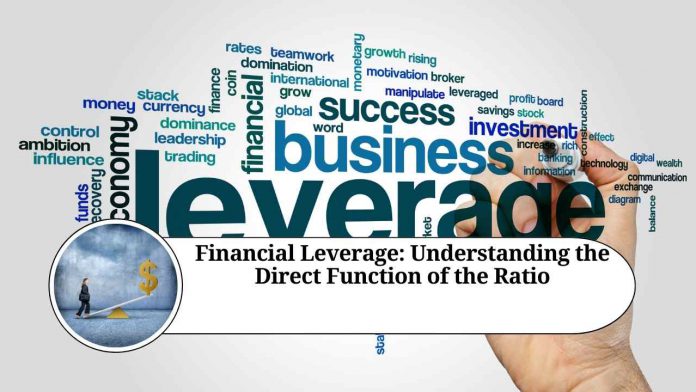Financial leverage is a term used to describe the use of borrowed funds to invest in assets or operations in order to increase the potential return on investment. This strategy can be a powerful tool for investors looking to maximize their profits, but it also carries significant risks. Understanding the concept of financial leverage and the direct function of the ratio is essential for any investor who wants to use leverage effectively.
The Ratio of Financial Leverage
The ratio of financial leverage is a measure of the amount of debt used to finance an investment compared to the amount of equity. This ratio is calculated by dividing total debt by total equity. For example, if a company has $500,000 in debt and $1,000,000 in equity, the ratio of financial leverage would be 0.5 or 50%.
The Direct Function of the Ratio
The ratio of financial leverage is a direct function of the amount of debt used to finance an investment. As the ratio of financial leverage increases, so does the amount of debt. This means that as investors use more debt to finance their investments, they will be exposed to greater risks.
When investors use leverage, they are essentially borrowing money to increase the amount of capital available for investment. This can be a powerful tool for generating returns, as the returns generated on the invested capital are magnified by the leverage. However, if the returns generated by the investment are not sufficient to cover the cost of borrowing, the investor may be exposed to significant losses.
For example, if an investor borrows $500,000 to invest in a property and the property generates a return of 10%, the investor will earn $50,000 in profit. However, if the cost of borrowing is 12%, the investor will actually lose $20,000. This is because the cost of borrowing is greater than the return generated by the investment.
Managing Financial Leverage
Managing financial leverage is essential for investors who want to use this strategy effectively. Investors should carefully consider the risks associated with using leverage before making any investment decisions. It is also important to monitor the ratio of financial leverage and adjust the amount of debt used to finance investments as needed.
Investors can manage financial leverage by diversifying their investments and using a combination of debt and equity to finance their investments. They can also use tools such as stop-loss orders and margin calls to manage their exposure to risk.
Conclusion
Financial leverage is a powerful tool for investors looking to maximize their returns, but it also carries significant risks. Understanding the direct function of the ratio of financial leverage is essential for investors who want to use this strategy effectively. By carefully managing their exposure to risk and using a combination of debt and equity to finance their investments, investors can maximize their returns and minimize their risks.
Read more useful content:
Frequently Asked Questions (FAQs)
Q: What is financial leverage?
A: Financial leverage is a term used to describe the use of borrowed funds to invest in assets or operations in order to increase the potential return on investment.
Q: What is the ratio of financial leverage?
A: The ratio of financial leverage is a measure of the amount of debt used to finance an investment compared to the amount of equity. It is calculated by dividing total debt by total equity.
Q: What is the direct function of the ratio of financial leverage?
A: The direct function of the ratio of financial leverage is the amount of debt used to finance an investment. As the ratio of financial leverage increases, so does the amount of debt.
Q: What are the risks associated with financial leverage?
A: The risks associated with financial leverage include the potential for increased losses if the returns generated by the investment are not sufficient to cover the cost of borrowing, and the potential for a margin call if the value of the investment falls below a certain level.
Q: How can investors manage their exposure to risk when using financial leverage?
A: Investors can manage their exposure to risk by diversifying their investments, using a combination of debt and equity to finance their investments, and using tools such as stop-loss orders and margin calls to manage their exposure to risk.
Q: Is financial leverage a good strategy for all investors?
A: Financial leverage is not a suitable strategy for all investors. It is important for investors to carefully consider the risks associated with using leverage and to have a solid understanding of their investment goals and risk tolerance before making any investment decisions.




















